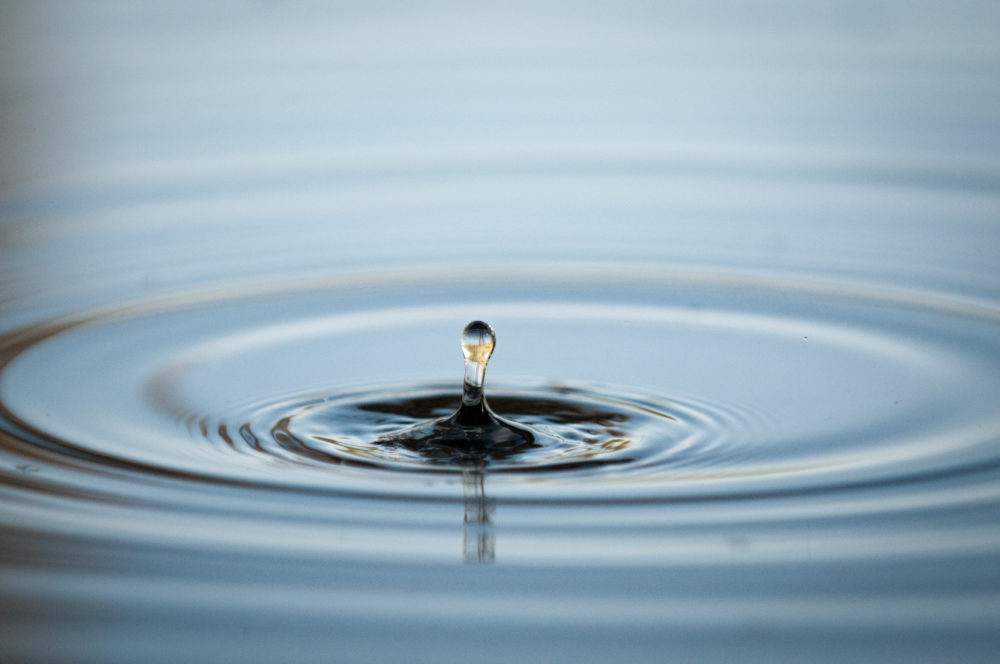

Join the Fight for Water Advocacy
The Flint water crisis began in 2014 when the city switched its water source to the Flint River without adequate corrosion control treatment. This led to lead contamination in the city's drinking water supply, exposing residents, particularly children, to high levels of lead, a potent neurotoxin. Today, the water crisis is still an ongoing issue, although significant progress had been made to address some of the immediate concerns. Here are some key developments up to that point:
- Lead Pipe Replacement: One of the primary efforts to address the crisis was the replacement of lead service lines that connected homes to the city's water system. Thousands of lead pipes were replaced to reduce lead exposure.
- Water Treatment Improvements: Measures were taken to improve water treatment and corrosion control to reduce lead leaching from pipes. This included the addition of corrosion inhibitors to the water supply.
- Health Services: Efforts were made to provide health services and monitoring to affected residents, particularly children who are more susceptible to lead exposure's harmful effects.
- Legal Action: Various lawsuits and legal actions were pursued against officials and entities responsible for the crisis. Some officials faced criminal charges related to their handling of the water supply.
In 2016, Dakota Access Pipeline protests were as newsworthy as the presidential election. The Dakota Access Pipeline is an oil pipeline that runs from North Dakota to Illinois. Its construction became a focal point for environmental and indigenous rights activists because it crosses the Missouri River, posing potential risks to the water supply and sacred sites of the Standing Rock Sioux Tribe.
In March 2020, a U.S. District judge ruled that the U.S. Army Corps of Engineers did not adequately consider the possible environmental impacts of the pipeline and ordered a comprehensive environmental review. In July 2020, a ruling was issued for the pipeline to be shut down and emptied of oil pending a new environmental review. Unfortunately, the temporary shutdown order was overturned by a U.S. appeals court on August 5th, though the environmental review was ordered to continue. The pipeline continues to operate to this day.
Regardless of the outcome of the DAP case, there are many other pipeline protests throughout the country, and this issue is far from over.
In each of these cases — and in other water contamination cases like those in New York and California — local residents have joined the fight for water advocacy. Flint water advocacy groups have seen some successes – several state officials were recently charged with involuntary manslaughter for their complicity in the deaths of residents due to unsafe water.
However, they must continue to fight for clean water. As many water activists know, there are few quick wins. Water activism takes tireless dedication to ensuring clean water, both in the U.S. and beyond.But the stakes are high. Whether fighting lead-ridden water, potential river contamination, or flooding caused by overdevelopment, people around the world are taking a stand.
Why Water is Worth Fighting For
Those of us who are fortunate enough to be able to get clean water from our tap as often as we like take it for granted. But those who have to fight for better water quality know how important water is to every aspect of life. People cannot survive without clean water, and neither can ecosystems. Water is crucial for the survival of humans and the planet.
It goes far beyond mere drinking water. Water “is vital for reducing the global burden of disease and improving the health, welfare, and productivity of populations,” according to UN Water. It is also a critical part of preventing and adapting to climate change, and an essential part of infrastructure.
Yet global water statistics are sobering. According to the United Nations Development Programme (UNDP):
- At least 1.8 billion people globally use a fecally contaminated drinking source
- Water scarcity affects more than 40% of the world’s people, and this figure is projected to rise
- Floods and other water-related disasters make up 70% of all deaths caused by natural disasters
Improving global water quality requires a combination of actions at local, national, and international levels. Here are some key actions needed to improve global water quality:
- Invest in Infrastructure:
- Upgrade and maintain water treatment and distribution systems to ensure the delivery of clean and safe drinking water to communities.
- Invest in wastewater treatment facilities to treat sewage and industrial effluents before they are discharged into water bodies.
- Reduce Pollution Sources:
- Implement and enforce regulations to control pollution from industrial, agricultural, and municipal sources.
- Promote the use of environmentally friendly farming practices to reduce nutrient runoff into water bodies.
- Protect Watersheds:
- Preserve and restore natural watersheds, wetlands, and forests, which play a critical role in filtering and purifying water.
- Implement sustainable land-use planning to prevent urban sprawl and deforestation in sensitive areas.
- Promote Sustainable Agriculture:
- Encourage the adoption of sustainable agricultural practices that reduce the use of pesticides, fertilizers, and harmful chemicals.
- Promote precision agriculture techniques to optimize resource use and reduce agricultural runoff.
- Public Awareness and Education:
- Raise public awareness about the importance of water quality and the actions individuals can take to reduce pollution.
- Community Engagement:
- Involve communities, including indigenous and local populations, in decision-making processes related to water quality management.
- Encourage community-led initiatives for water quality improvement and conservation.
In 2015, world leaders committed to the UN Sustainable Development Goals (SDGs). Goal 6 concerns water, and includes a target of ensuring universal access to safe and affordable drinking water by 2030. This requires investing in infrastructure, providing sanitation facilities, and encouraging appropriate hygiene.
If this goal is to be achieved, it will be in no small part due to the efforts of water activist groups, such as the Baja waterkeepers. For each example of water contamination, drought, or flooding, activists have pushed to raise awareness of the issue and fix it.
Water advocacy is particularly important when a water issue is not merely an issue of infrastructure or poor sanitation practices, but has a political dimension. Unfortunately, that is too often the case.
The Politics of Water
As UN Water states, “The physical world of water is closely bound up with the socio-political world, with water often a key factor in managing risks such as famine, migration, epidemics, inequalities, and political instability. The political dimensions of American water issues in Flint and North Dakota are obvious. Similarly, many water issues in other parts of the world are highly political.
- Flooding in Phnom Penh, Cambodia, is worsened by the city’s inadequate flood controls. In the past 10 years, the Cambodian government has leased six of the city’s lakes to land developers, which have filled the lakes in for their development projects. Without these lakes, the monsoon rains have nowhere to go. Some city streets are flooded with water more than 30 inches deep.
- Pollution in the Ganges River in India has made it a “toxic waterway.” Environmentalists have applauded a recent court ruling which declared the Ganges to have the same rights as a person, which would make polluting the river the legal equivalent of hurting a person.
- Water contamination in El Salvador, largely caused by mining, means 98% of fresh water in the country is contaminated.
- Preventable blindness in Uganda is caused by bacteria spread in unsafe drinking water. Women are disproportionately affected by the disease, because gender roles put them in charge of garden work, cooking, collecting water, and other tasks that expose them to unsafe water more often than men.
How Can We Solve the Water Crisis?
There are many ways to improve access to and quality of water around the world. As outlined in the SDGs, some important steps are to:
- Reduce pollution, eliminate dumping, and minimize the release of hazardous chemicals and materials; treat wastewater; increase recycling
- Increase water-use efficiency
- Improve water resource management
- Protect and restore water-related ecosystems, including mountains, forests, wetlands, rivers, aquifers, and lakes
- Improve water and sanitation-related activities involved in water harvesting, desalination, and wastewater treatment, particularly in developing countries
- Support and strengthen local communities’ ability to participate in improving water and sanitation or, as it is often known, water, sanitation, and hygiene (WASH)
The Power of Water Activism
Ultimately, ensuring clean water takes the collaboration of governments, businesses, communities, and activists. The Flint water advocacy groups are a great example of this. Their situation is ironic – while they have not yet succeeded in restoring clean water to their own community, they have improved the quality of water throughout America by turning attention to the issue.
The crisis raised public awareness about the importance of safe and clean drinking water. It prompted discussions about the state of water infrastructure in many communities and highlighted the need for vigilance in monitoring and maintaining water quality. The federal government allocated funding to support lead pipe replacement and infrastructure upgrades in communities across the country. The Water Infrastructure Improvement Act of 2016 provided grants for lead reduction programs. The Flint crisis accelerated efforts in some cities to identify and replace lead pipes, which can leach lead into drinking water. Several cities and states have launched programs to replace lead service lines, reducing the risk of lead exposure. Residents in various cities also began conducting independent water testing and demanding accountability from local authorities.
For example, New York City owes the quality of its water in part to the Flint activists who raised questions about water testing. As Matthew Corkins writes in The Observer, “The Flint water crisis opened up the whole country’s water systems to scrutiny.
But it wouldn’t have happened had it not been for the many scientists, activists, mothers, all those in Flint, Mich., who have worked hard to supply clean water and support, to obtain information, to spread information, and so much more.”
Now more than ever, water is an issue we should all care about, and water advocacy is the key to ensuring we all have the clean water we need. If you’re interested in keeping people, the environment, and our plant safe, now is the time to start advocating for water.
Suscríbase a nuestra lista de correo
Manténgase en contacto con el ICF
Sea el primero en recibir información exclusiva sobre lo que hace ICF para marcar la diferencia.
Los campos marcados con * son requeridos
